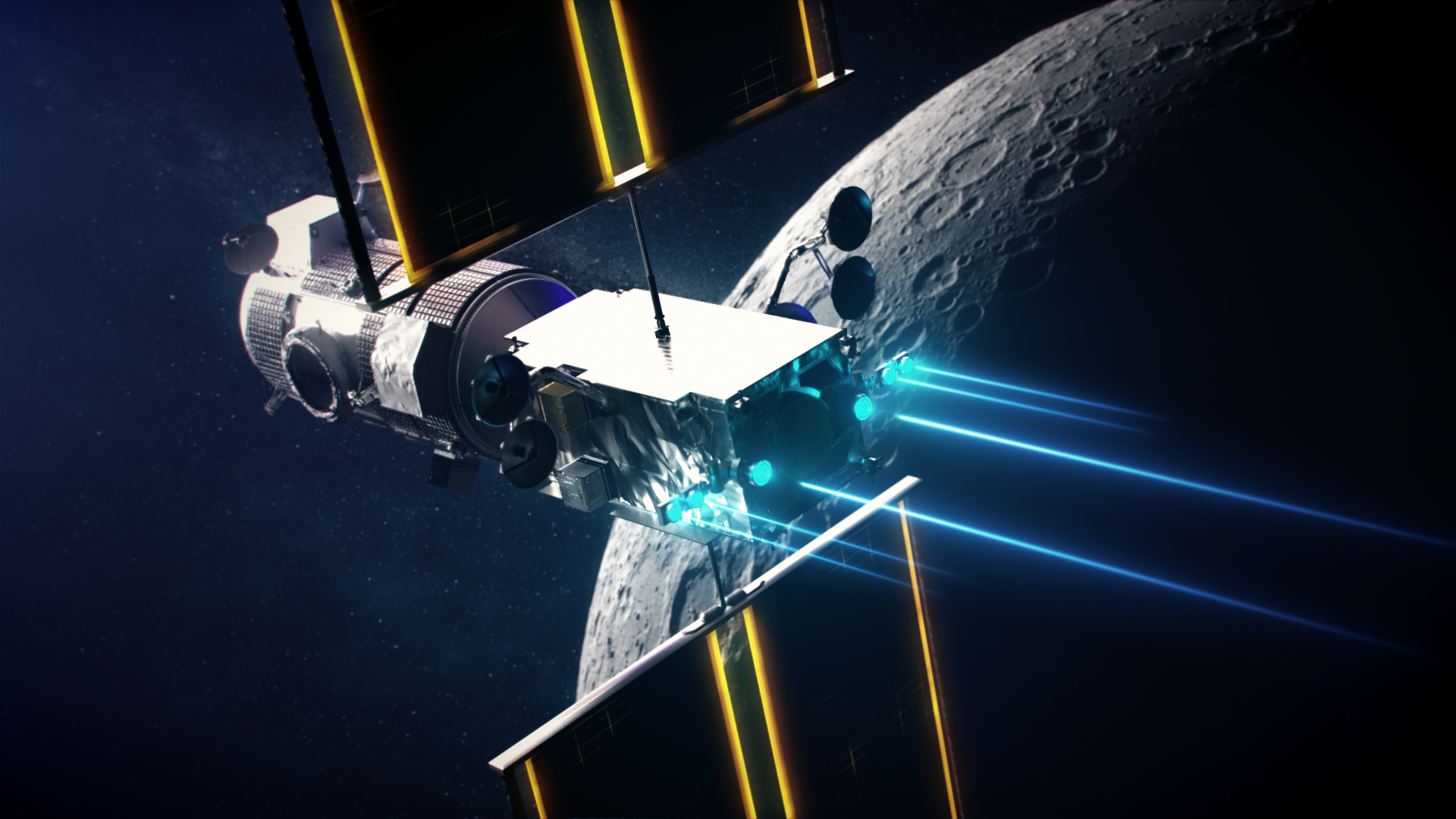Visiting an unknown comet that has not even entered our solar system yet? Challenging, but not impossible. With Comet Interceptor, the European Space Agency is planning to map a truly pristine object from the beginnings of our solar system. In this interview, Timo Rühl, Systems Engineer for the development of the platform, explains what Comet Interceptor is about and why small-body research is not only of particular scientific interest but also particularly challenging.
What is Comet Interceptor?
Timo Rühl: Comet Interceptor is – as the name suggests – an ESA mission to intercept a comet. Not in the sense that it will actually stop the comet, but in the sense that it will position itself to be close to the comet as it passes by. Which comet that is going to be has not been determined yet and will most likely still remain unknown even when the mission is ready to launch.
Why is Comet Interceptor to visit an unknown comet?
All missions that have gone to comets so far, such as Rosetta or Giotto, have visited comets that originate from the Kuiper Belt. These comets are short-period comets, which means that they enter the inner solar system relatively frequently. Their frequent visits bring them close to the Sun at regular intervals, which leads to evaporation of frozen gas components. These evaporation processes cause dust particles to detach from the nucleus of the comet, creating a gravitationally unbound atmosphere that surrounds the nucleus and is commonly referred to as coma. At the same time, however, the recurring evaporation processes also change the composition of the comet, so that objects from the Kuiper belt cannot be considered pristine. Truly pristine objects originate from the Oort cloud or even from outside our solar system and undergo these processes for the first time when they enter our solar system. The problem is that the appearance of these objects cannot be predicted with sufficient lead time to then build and launch a spacecraft. This means that we have to launch the mission and then wait for an appropriate target to present itself.
Is it common that objects like this enter the solar system?
Objects coming from the Oort cloud typically have very long orbital periods, so it takes tens of thousands of years for them to return. And there have only ever been two interstellar objects in our solar system that we know of, so that definitely does not happen very frequently.
And these interstellar objects have left again?
Yes, exactly. Interstellar objects are not gravitationally bound, so they just pass through our solar system once and never return.
How will Comet Interceptor intercept such an object?
Since these pristine objects cannot be detected a long time in advance and building a spacecraft is a lengthy process, we have to take a different approach here. We first build the spacecraft and then bring it into a parking position in space, where it can spend a long time waiting until a suitable target is detected.
How does that work in practice?
Comet Interceptor is an F-class mission within ESA’s Cosmic Vision Programme. The F means that it is a fast-track mission with a development duration from selection to launch readiness of about eight years. Comet Interceptor will be launched in a dual-launch configuration together with Ariel, which is an ESA M-class mission dedicated to measuring the chemical composition and thermal structures of transiting exoplanets. Both missions will be delivered to the Sun-Earth Lagrange point L2, where Comet Interceptor will go into waiting mode. As soon as a suitable target presents itself, the spacecraft will be configured to make a transfer to intercept the object.
Why was L2 chosen as parking position?
L2 is one of the equilibrium points of the restricted three-body problem represented by the Sun, the Earth and a spacecraft. This means that an orbit around this point is relatively stable and requires very little maintenance. The Sun-Earth L2 point is located about 1.5 million kilometres 'behind' the Earth as seen from the Sun. This makes it a good location for Comet Interceptor to wait and then make the transfer to its target.
How long can the spacecraft stay in its parking position?
The time the spacecraft can stay in L2 is limited primarily by the amount of propellant it can carry. L2 is a relatively stable point, but there are still perturbation forces, which means that you have to consume some fuel to make corrections. There are also lifetime issues. At some point, the spacecraft will begin to degrade. For the moment, the spacecraft is scheduled to stay in L2 for a maximum of four years.
What happens if no suitable target presents itself during these four years?
In that case, the spacecraft will go to a secondary target. This means, that it will most likely visit a Kuiper belt object.
What phase is the mission currently in?
As I mentioned before, the mission is due for launch in 2028. This means that the schedule is very tight, especially for a science mission of that complexity. We are currently in phase B1, one of the preliminary definition phases. In this phase, we consolidate the spacecraft design and system requirements, but do not yet purchase any hardware. After this phase is completed, the implementation phases (B2/C/D) begin, where we work out the detailed design and actually assemble and test the spacecraft.
What kinds of payloads are to be included in the mission?
In total, the Comet Interceptor mission will consist of three spacecraft: the main spacecraft and two smaller secondary probes. This configuration allows for multi-point measurements. Each of the three probes carries a suite of instruments that allows to study both the comet’s nucleus and coma and their interactions with the Sun. Splitting the instruments between three separate spacecraft also has the advantage that the main spacecraft can stay at a safer distance from the comet. The dust particles surrounding the comet move at speeds exceeding 70 kilometres per second relative to the spacecraft, which means that despite their small size they carry a lot of energy and can easily destroy the spacecraft.
How can the spacecraft be protected from these dust particles?
The spacecraft will be equipped with a dust shield consisting of several layers of different materials. This allows the energy of the impacting dust particles to be dissipated and reduces the probability of damage to the spacecraft.
Why is it interesting for science to study comets?
Small body research creates a lot of valuable data. The objects in the Oort cloud are so far out that they are halfway between our Sun and the next star. They are remnants of the early days of our solar system. We know that the Earth was formed by collisions between what we call planetesimals that accumulated into planets over time. The objects forming the Oort cloud can therefore be regarded as fossils from the early days of the solar system. They can tell us what objects in the early solar system were made of. More than 4,000 research papers have been published with the data from Rosetta, the first mission to orbit a comet. And yet there are still many unanswered questions about how the solar system formed and how planets like our Earth came to be.
What is your personal view on Comet Interceptor?
For me, Comet Interceptor is a very inspiring mission. It is challenging because there is no way to know all the constraints and boundary conditions in advance. We do not know which comet we will visit and we do not know when and where we will meet it. What is the position of the Sun at the rendezvous, where will the Earth be? Can we protect the spacecraft from the dust environment? You jump in and work on these problems, but when you take a step back and realise that you are working on the exploration of an object that has remained almost unchanged since the formation of our solar system, that is a great motivator. Not only for me, but for the whole team. And I am very fortunate that as a systems engineer I get to work with all the great people who provide inputs and contributions to the mission. That creates a lot of enthusiasm.

Timo Rühl studied Mechanical Engineering at RWTH Aachen and Space Systems Engineering at TU Delft. He has been working as Systems Engineer in the Scientific Missions Department of the Directorate for Space System Studies, Predevelopment and Proposals at OHB System AG in Bremen for more than two years and fulfils the role of Platform Systems Engineer for the Comet Interceptor mission.






